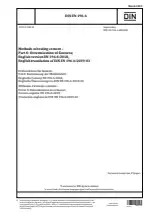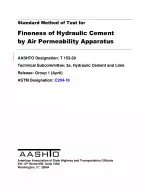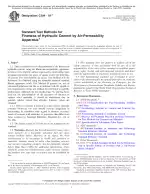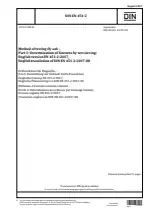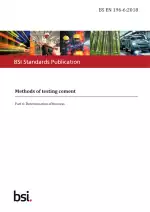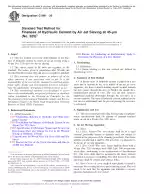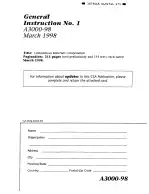Methods of testing cement - Part 6: Determination of fineness
Also Known As:
The DIN EN 196-6 standard describes three methods for determining the fineness of cement. The first method is the sieving method, which is primarily used to check and control the production process by demonstrating the presence of coarse cement particles. This method is not suitable for determining the particle size distribution of fine particles.
The second method described in the standard is the air-jet sieving method, which measures the retention on sieving for particles that pass a 2.0 mm test sieve. This method is useful for determining the particle size distribution of agglomerates of very fine particles. It can be performed using test sieves with different aperture sizes, such as 63 µm and 90 µm.
The third method, called the air permeability method (also known as the Blaine method), measures the specific surface area of the cement by comparing it with a reference material sample. This method is primarily used to check the consistency of the grinding process in a cement plant. However, it only provides limited information about the properties of the cement in use, and may not give accurate results for cements containing ultrafine materials.
The methods described in the standard are applicable to all types of cements defined in EN 197-1.
| Descriptors | Air permeability, Air-jet screen, Binding agents, Blaine tests, Brickwork, Cements, Construction, Construction materials, Determination, Fineness, Fineness of grind, Fineness of grinding, Grain size, Grinding (size reduction), Masonry work, Particle size measurement, Screening (sizing), Testing |
| ICS Codes | 91.100.10 - Cement. Gypsum. Lime. Mortar |
| Language(s) | English |
| File Size | 1.2 MB |

